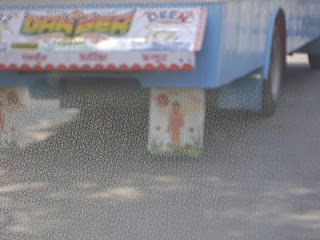I decided to host a Murder Mystery dinner party last Saturday. And I wanted to make some gold old fashioned American food. Being in India, I quickly realized that finding real custard ice cream, fudge, and other things was going to be a challenge. So I cooked all Saturday (and realistically, my housekeeper did all the main course dishes. Thank goodness for her!)
I decided to share my success. 1. I didn't kill anyone. 2. People actually cleaned their plates. So, for those foodies stuck in places with limited food variety available, please pay attention.
Appetizers: I made bacon wrapped prawns, a cheese platter, homemade French bread, and an olive/pickle tray. We discovered if you satay the prawns while wrapped in bacon, they obtain a level of deliciousness we didn't think was possible. (OMG bacon!) The cheeses were imported and expensive, but worth it. As were the olives. Check out Spencer's gourmet section, but watch expiration and import dates as the cheese will often be old. I used my fabulous new breadmaker to make the French bread. Highly recommend getting one!
Salad: This was simple. We cut up a bunch of fruit (any variety will do) early and made a sauce comprised of orange juice mixed with some sugar. Not only does it taste delicious, but it prevents the apples from turning brown. Cover and store in the fridge until ready to serve.
Main Course: Baked chicken with mushroom gravy, wild rice, garlic and onion green beans. All made with local ingredients. The mushroom gravy had a splash of sweet white wine.
Dessert: I made home made vanilla ice cream using my friend's ice cream maker, home made kahlua fudge using my Grandma's recipe, and coffee with a little Bailey's Irish cream. Fudge is really easy to make if you have marshmallow fluff. Sounds a little weird, but it tastes delicious.
Hope this provides some inspiration for other foodies! We had a blast.








































